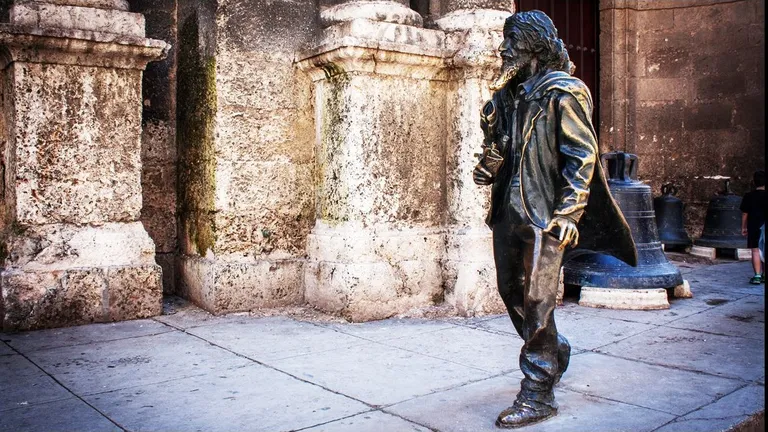Every Cuban city has its beautiful, sad, unique, and engaging stories that make it distinctive. Those scenes are bound to include street characters: beggars, vagrants, and people whose minds could be anywhere.
In Holguin, we had Concha, a demented but witty character, so much so that when she died in the local newspaper Ahora, journalist Cleanel Ricardo wrote a chronicle about her, a classic of daily literature.
In Cuba, the most famous of all street beggars had a somewhat aristocratic name: the Chevalier of Paris. It turns out he was a knight, not from the capital of France, but from Havana.
His story was as famous as if he had moved in the art and entertainment world of this archipelago. But the truth is that this Galician conquered Cuba with his unique life story, and at the end of his life, he was immortalized with a bronze statue. As was also done to British singer John Lennon in Old Havana.
All tourists, both Cuban and foreign, never fail to take a photo in front of the statue of the Gentleman from Paris. As proof that they visited Havana, also the capital of the daiquiri and mojito immortalized by the American writer Ernest Hemingway.
The “Gentleman from Paris” is not one of those immobile sculptures that adorn parks or avenues. He is part of a mystical troupe of migratory stories. Who was this character with such a bombastic pseudonym? What was his real name, and how did he come to Cuba? Why immortalize a gentleman from Europe in bronze? Many mysteries surround his wandering journey through Havana.
FROM LUGO TO HAVANA
No one knows for sure how the nickname came about or who first called him that. Especially since his birth certificate offers a pleasant surprise to the more curious. The “gentleman” wasn’t born in Paris, and probably never even strolled along the Seine River.
José Manuel López Lledín was Galician, specifically from A Fonsagrada. The French-inspired nickname with which he became famous had nothing to do with his pedigree, but rather with his elegance.
Newspapers of the time report that López Lledín arrived in Cuba in 1913 with several of his brothers. He was only 14 years old. There was no job that could resist his youth and entrepreneurship: manager in a flower shop, tailor, assistant in a bookstore and a law firm, and servant in refined hotels. He even studied and refined his manners to find a better job.
A prank would land him in prison, though to this day there is no certainty about the alleged crime. The lack of documentation regarding the arrest or trial led to urban legends with various hypotheses.
They say the cause was the disappearance of some lottery tickets. Also that he was suspected of murder. Even that he stole some jewelry and robbed a wine store. Released due to lack of evidence and exonerated of all guilt in the eyes of the public, the gentleman returned to roaming the streets.
The difference was in his lost and nostalgic look, as if his time in prison had turned off his lights, as if knowing his innocence made him invent parallel realities.
He always dressed in black with a long cape, as if he refused to abandon his fine manners and European attire on an archipelago, where the summer is unbearable for such European attire.
But the gentleman was not just another “crazy man” with tangled hair and a face shattered by living on the streets. He always carried stacks of newspapers under his arm like a mobile library, carrying a bag full of belongings and gifts.
He offered candy to children and flowers to the women of Havana. After almost 50 years of spending the night in the doorways of iconic buildings and brightening the lives of passersby. López Lledín was admitted to a psychiatric clinic where he spent his last days.
They say his family tried to return him to Galicia, and he promised he would throw himself into the sea if they tried. But the truth is that his life has taken its place in the history of urban legends, from which Havana is no exception.
It was when he was immortalized in a bronze figure so that those who walked the streets, where the Knight walked, would know that his passionate life was spent in the most beautiful land.
- Friendship is a soul that inhabits two bodies - 8 de December de 2025
- To capture the most beautiful even when we talk about pain - 30 de November de 2025
- When Life Only Asks You to Be Happy - 25 de November de 2025

